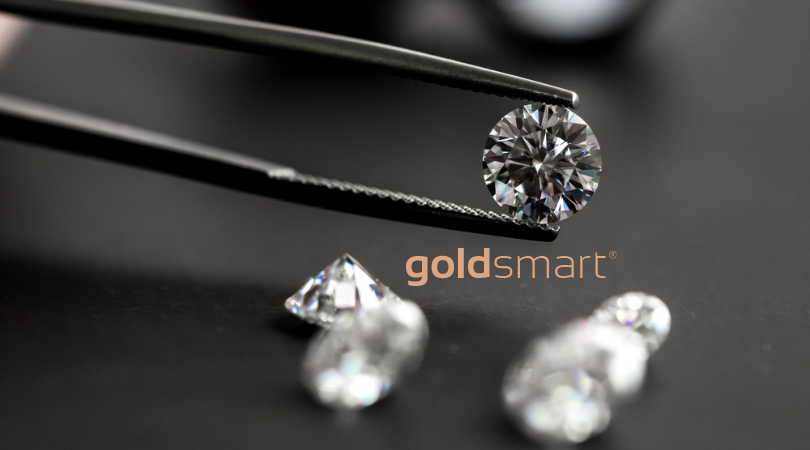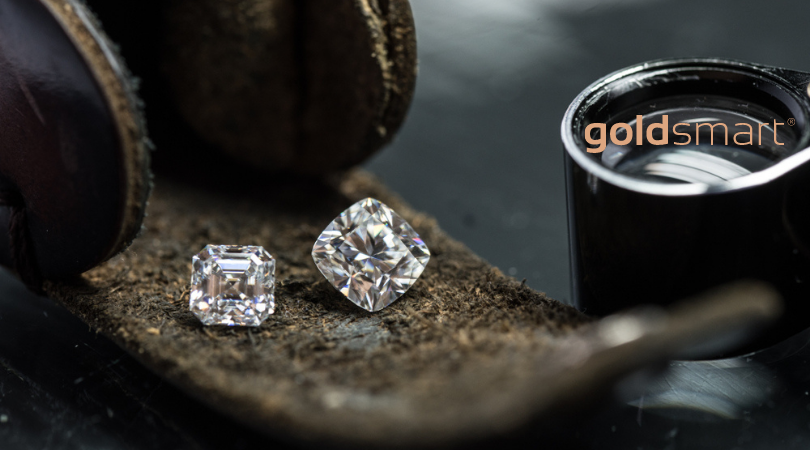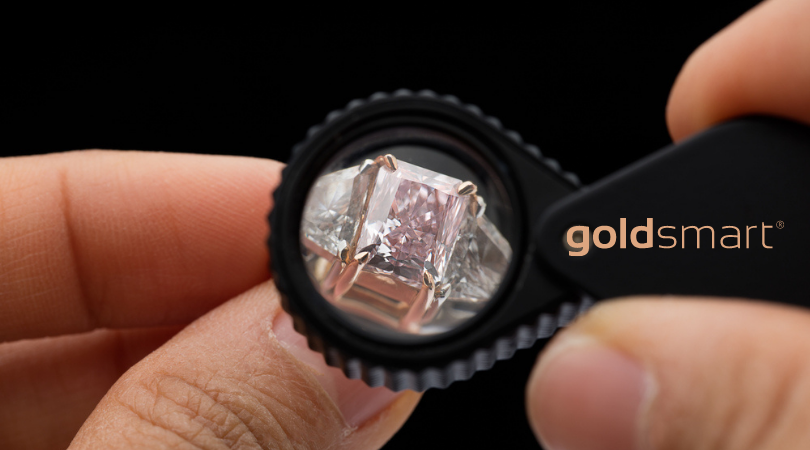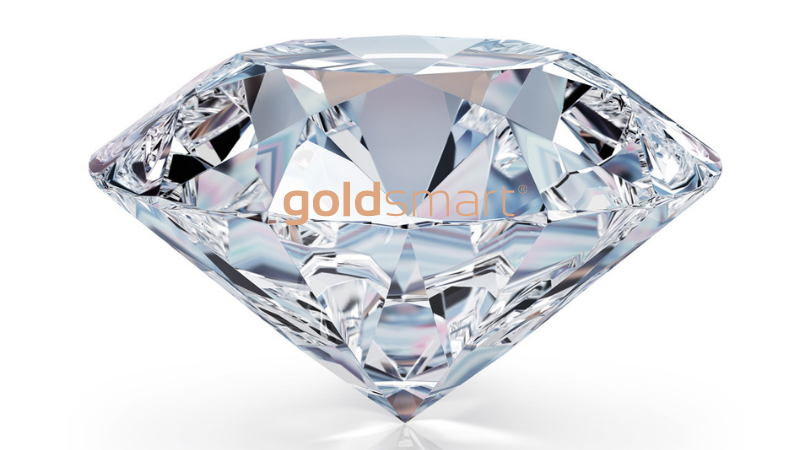
What’s the worst gift someone could give another? A charitable donation in their name really intended for something else? A gift that had to be returned because it was defective or the wrong item? Or a gift that disappears in a few days or weeks after it is given? No, the worst gift by far is one that is given with all the decorations of sincerity and turns out to have been an intentional lie all along. That’s the case with fake diamonds. They represent an image that is “supposed” to be rare, expensive, takes great sacrifice to secure and physically embodies how much someone cares about another. So, when it turns out the diamond given is an artificial fake, it communicates volumes regarding what the giver actually thinks about the recipient.
The giving of a fake diamond without disclosing its condition involves a lot of planning, engagement, action and deception, all of which are on purpose. That is what makes the action so offensive both to the person receiving the gift as well as to others witnessing or hearing about it. If it was simply a small gesture, openly disclosed and known, that would be another matter. It would be no different than giving a gift of costume jewellery. Unfortunately, when deception is involved, allowing someone to think a gift is far more than it is, assumptions and choices in life could hinge on the deception that never would have happened otherwise. Legally, in a business transaction, the same kind of fake gift would be considered fraud in most countries and constitute a crime. So, passing off a fake diamond without telling someone that’s the case is no simple matter, joke or slight.
The above said, fake diamonds still get passed around, and a lot. Anything precious tends to be ripe for duping, and just like fake gold there will always be plenty of fake diamonds as well. The problem is so pervasive, both private diamond buyers as well as professionals have had to institute a whole assortment of tests and detections to make sure people are trying to pull a fast one with supposedly rare stones and jewellery sets. And, as more and more fakes enter the market, they start to appear in the most unexpected places. People are even realizing they have fake diamonds handed down to them from estates and inheritance without anyone really knowing the truth for generations.
Technical Background
Where exactly do fake diamonds come from? Most people will hear the answer along the lines of being created in a lab. That’s partially true, but there’s more to the story. Artificial diamonds are technically referred to as moissanite or synthetic moissanite. The actual name was borrowed from a fellow named Henri Moissan. As a chemist, Moissan was well aware of how inorganic processes created diamonds naturally, producing one of nature’s rarest and hardest substances. While on a trip in Arizona in 1893, the Nobel Prize winner was exploring rocks and strata in a meteor impact site and came across what he thought were diamonds. However, continuing to examine the samples, Moissan eventually concluded they were not the rare gems but instead a form of silicon carbide. That said, even the other form the rocks turned out to be were still rare in Moissan’s day; all samples located were only in meteorite sites well into the middle of the 20th century. It was only then that additional samples were found in mining sites occurring naturally on earth.
In terms of production and wide availability, moissanite today is generally synthetic in nature, meaning it is factory-produced from lab-based chemical reactions. The application of moissanite really started to appear and hit the market big right at the tail end of the 1990s and turn of the century with fake diamonds that looked amazingly real and replicated the real thing accurately. Still made from silicon carbide, these fake diamonds could be produced in all shapes and sizes and with amazing clarity. By 2018 the production patents that kept the production of synthetic moissanite limited had expired, and that meant anyone could produce fake diamonds at will and put them to market for consumer purchase.
The key features that allows moissanite to pass so well as a fake diamond tends to be the very same features that people look for in real diamonds. First, moissanite can be produced with extremely good transparency within the stone. When measured on a refraction scale, the synthetic stone comes extremely close to a diamond (2.65 versus 2.42 for a diamond). Secondly, moissanite has incredible hardness and density, similar to real diamonds. In fact, its hardness exceeds that of cubic zirconia, the other common material used to make fake jewellery stones. Third, moissanite has thermal conductivity properties. They tend to play out very similar to diamonds and can only be differentiated with ultraviolet light showing a bit of greenish or yellow glow or curved inclusions. Real, natural diamonds won’t produce these effects.

The Best Ways to Test a Diamond for Being Fake
Buying diamonds can range from the singular purchase for a personal relationship interest to collecting gems and stones for personal investment to buying diamonds for resale in business ventures, moving value from one market to the next for profit. Whatever the case, the same issue applies, how does one make sure the diamond being bought is actually real and not a fake? There are lots of ways an amateur or professional can be duped and countless stories of the same. It’s never been enough just to rely on a dealer’s name and paperwork alone, although legally-established businesses have a rarely been the culprits in passing fake diamonds.
First, one has to understand there is far more than just one type of fake diamond. As mentioned above, moissanite and cubic zirconia are two types in a field of multiple alternatives. No one in the business of buying diamonds for any purpose should be doing so blindly. It’s practically a pre-requisite for a person to have spent some time learning about the stones, their features, the qualities of a good diamond, and how to verify their quality.
Second, the tests that exist on the fly pale in comparison to full professional testing methods, but they do provide at least some level of catching low-grade fakes or signaling a question enough that a person should back away and look for an alternative versus what they are considering at the time. Keep in mind, as well, not every test will work be applicable. A lot depends on the condition of the diamond in terms of whether it is already mounted in a stonepiece or loose. Obviously, a loose stone is far easier to work with and test in a variety of ways. The mounting actually creates restrictions and limits one’s ability to verify quality and accuracy, including the ability to cover up physical defects such as cracks or chipping. That said, nothing bars a jeweller from removing the stone from the mounting for additional observation and restriction-free verification.
Can professional diamond buyers be fooled like consumers? The answer is “yes.” Poor-quality fakes are spotted very easily. However, extremely well-done professional fake diamonds can pose a serious challenge for professional diamond buyers, especially with modern technology. Laser tools and fills have become exceptionally good at producing results, making it much harder for experts to spot high-grade fakes. As for consumers, these products would likely pass unnoticed almost all the time, and that should give people a very disturbed feeling in their gut if not for an industry bent on protecting itself and consumers with extensive verification.
Immediate tests
Here are some of the immediate tests one can apply to at least flag potential issues or warnings signs.
Fogging
Natural diamonds have a resistance to condensation. Condensation happens when there is a difference between the temperature of a surface and the surrounding air, causing moisture to coalesce and form droplets. When one breathes on a stone and it stays fogged up for a while, that’s condensation that has built up. Fake diamonds will display this trait. Real diamonds don’t allow for condensation due to the nature of their chemistry and won’t fog up at all.
Water
Using a glass of water, the diamond is dropped inside to watch how fast it sinks. Real diamonds have an incredible amount of density which makes them extremely hard. They sink very fast as well. Any kind of a diamond that actually floats, bobs or slowly drops has far less density and maybe even trapped gasses inside it. That creates buoyancy and is a clear flag something is wrong.

Magnified View
With a magnifying glass or a loupe, the diamond should be examined internally with good light. The target involves imperfections. While the seemingly common sense perspective would be that a good diamond has no imperfections, it’s actually the opposite. A diamond with zero imperfections inside is very likely a fake, synthetic product. One that has slight inclusions is more likely to be the real natural stone.
Using a Black Light
Designed to display a different type of color spectrum, a black light will highlight fluorescence. With a real diamond one can expect to see a good amount of blue hue. With a fake diamond the coloring will be more of a green or yellow tinge instead. That said, there have been plenty of exceptions to both categories, so black light testing is only an indicator, not a serious measurement.
Examine the Mount
When a diamond has been placed in a setting it’s usually matched with a high end metal or similar. With a real diamond of worth one should expect to see a mount of expensive, precious metal used such as white or yellow gold, platinum and similar as well as additional accents with smaller precious stones. If a mount appears with cheaper metal, that tends to be a major giveaway sign.
Hallmarks
Many manufacturers use stamps and hallmarks on their stones and jewellery to identify manufacturing and by whom. Fake stones will frequently have a microscopic stamp on them if produced by a reputable manufacturer. The mount metal used will also have stamped or engravings identifying the quality of the metal in terms of karat and numeric codes for metal identification.
Heating
Most consumers will probably never be able to apply this test because it is destructive in nature. However, real diamonds can be heated without any issue. Fake diamonds, on the other hand, will shatter. The process involves heating up the diamond with flame or hit for about 40 seconds or so and then immediately dropping it into a container of cold water. The physics of rapid cooling causes contraction which happens too fast for inferior materials, and they break or warp. Diamonds being much harder and dense, don’t have this issue.
The Refraction Test
Real diamonds have a unique ability to sparkle and bend light in a unique way that makes them look like they are emitting sparks. What’s happening involves regular light entering the crystal, being bent in a different direction and changing color spectrum in the process. Fake diamonds have a very poor ability to refract and generally don’t have any sparkle or brilliance. This refraction element can be confirmed a couple of ways. Put the diamond on a newspaper. If you can read the print through the diamond, it’s a fake because refraction would have made it hard to read anything. Alternatively, a clear dot on a piece of paper works well too. With the pointed end of the diamond on the dot, you should not be able to see it looking through the diamond. If you do see the dot, the diamond again is likely a fake.
The Sparkle Test
This approach is another version of testing refraction, but it works better for stones that are already mounted. With the diamond held to a lamp bump, one should see light bouncing off the stone with color accents. These will often appear on the walls or ceiling above. Fake diamonds don’t reflect light very well at all and won’t give off much of a light show on nearby surfaces.
The Diamond Tester Tool
Using a thermal conductivity probe, a user can measure how well a diamond disperses heat. Diamonds have amazing ability to pass heat through themselves. This dispersion measures poorly with fake diamonds except moissanite stones. The moissanite test actually performs as well as a real diamond, which is why they have become the go-to stone for high quality fakes that are hard to detect.

Weight
Real diamonds have far greater density than other stone types, real or fake. That makes them heavier. If measuring two stones that are supposed to be the same karat, cut and shape, the real diamond will weigh more. These weights can be tracked and referenced for exact amounts, which makes them easier to identify versus fakes of the same size that show with a different weight.
Electrical Conductivity
Like heat dissipation, real diamonds also pass electricity through themselves very well. This is a distinction that sets them apart for synthetic moissanite, which cannot pass a charge so easily. No surprise, diamond electricity testers have been developed to apply this test accurately on hand.
X-ray Testing
If you’re lucking enough to have the equipment on hand (which most people are not), x-ray testing will identify the molecular structure of a stone, which can then be compared with what is expected for a real diamond versus a fake.
The Old Scratch Test
The myth was that if one takes a diamond and applies it with pressure across glass, it will leave a notable scratch because of the diamond’s hardness. However, modern fake diamonds can be constructed with very extensive hardness, even if not dense, and they too can fake the mirror or glass scratch test. So, this method of verification has basically dropped off because it can be circumvented easily.
Giveaway Traits of Particular Fake Diamond Types
Each stone composition has unique traits about it, including fake ones. And those chemical elements also give off specific signs that are unique to that composition and unlike other forms, whether natural or man-made.
For Cubic Zirconia diamonds, both the lack of sparkle as well as poor performance in a heat test tend to be quick giveaways on the fake qualities of this stone. In additional, zirconia diamonds give off an orange hue when put to light, and they frequently examine with full clarity and no imperfections at all internally.
With white sapphires (yes, there are actually clear ones), one is dealing with a natural stone being passed as a diamond. The internal nature of the stone, however, tends to be blurry without an distinction. They also don’t sparkle and don’t have a clear delineation between light and shade areas in the stone.
Moissanite diamonds are the high end of the fake spectrum, as mentioned earlier, and very hard to detect. These stones, however, can’t pass an electricity charge test, which is the Achilles Heel and giveaway.
White Topaz is another of the natural stones that can be passed as a diamond to an unwary buyer. That said, these fakes don’t have the density or hardness of a real diamond. As a result, they will show off scratches on their surface that will never exist on a real diamond. But one needs to use a microscope or loupe to see these differences.

What Should a Consumer Expect
Given what’s been covered in this article so far, it should be pretty apparent that while a consumer can easily block off some of the low-grade fake diamonds on the market, high quality stones without the natural diamond qualities will be very hard to spot. As a result, anyone who is going to be receiving or paying for a very expensive diamond would be well-served to seek out a professional expert’s help in verifying the authenticity of the stone in question as well as its grade and quality. The capability that exists today in fabricating synthetic moissanite stones is generally beyond what most can detect with the naked eye and basic tools. That, of course, makes it extremely hard for a consumer to know what they have on hand without additional help.
The traditional tests for fake stones are not without merit, however. They are extremely useful in catching lower quality stones being passed as diamonds or at least flagging behavioral features that should give a person pause before signing on the dotted line for a purchase.
The other approach a consumer can use involves working through a certified, licensed, and reputable diamond seller that has been established and with a long track record of authenticity and service to their community. Diamond sellers and buyers who have commercial dealerships cannot afford to be taking chances with disreputable practices; it would literally put them out of business as word got out about passing a potential fake. Not to mention, there would be criminal ramifications as well. As a result, reputable diamond dealers have a well-understood path and role in both providing high quality stone, procuring the same from private and public sources with extensive testing, and protecting the community from the trafficking of fake diamonds and similar.
If you have unwanted jewellery with diamonds that have reached their point in your life that you want to convert into something else via liquidating their value, give us a call or email and we can set up an appointment at GoldSmart to evaluate your collection. Again, there is no obligation to sell, and we gladly provide our evaluation with educational benefits so consumers have a far better idea where they stand with their jewellery.